From Truffles to Sauternes to Chocolate
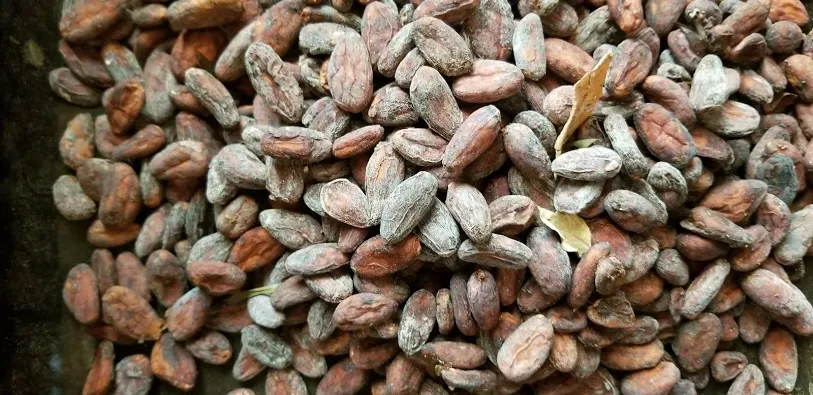
After spending up to ten days in the sun and moon of a jungle, there’s no telling what could end up in that sack. At this stage the beans do not smell like chocolate.
“White Truffle Cappuccino courtesy Chef Colicchio.”
Fellow chef Tom Condron and I were in New York City, enjoying a pre-Food Network appearance dinner at Gramercy Tavern and Chef Colicchio was sharing, with his compliments, that secret handshake of chefs when we dine out. If you’re going to serve a freebie to a chef, you send them your best dish, something that would likely knock their socks off.
The waiter gently placed a delicate bowl in front of me then silently made way for another gentleman with something more modern, more clever than the teapot it resembled. He poured out the contents of this teapot, an opaque, caramel-colored liquid, with a luscious, luxurious texture. Its aromas enveloping me in their impossibly complex notes of beef, veal, aromatic vegetables, fresh herbs, mushrooms, and white truffles.
“Wow”
It was more of a whisper. My companion had received a different dish and he had a few sensual words for the aromas tugging at my senses. He wanted what was on my side of the table. As I reached for my spoon, the first gentleman returned to the bowl with a gleaming truffle shaver and a lemon sized white truffle. They weren’t done with me.
“White Truffle from the Italian Piedmont.”
With those words he quickly shaved perhaps two hundred dollars-worth of razor thin truffle onto my “cappuccino,” then quickly excused himself and needlessly commented that we should “enjoy” as if there was another option. I inhaled slowly, methodically. My eyelids settled as my sense of smell searched for every bit of energy.
In the thirty seconds it took for two gentlemen, waiters at New York City’s Gramercy Tavern, to serve that soup it created a memory that will last me a lifetime.
And the first time I pulled warm cacao beans out of the oven and rolled them through a bean cracker, the aromas that enveloped me were equally as intriguing, and I had to tell someone about it, had to share it immediately.
My words were somewhat lost on Carmelita. She isn’t a fan of mushrooms.
After the cacao beans have been dried, they’re bagged up in fifty-pound sacks. At this point they’re shelf-stable and can be properly stored, well, I’m not sure for how long. I’ve heard they can last a year or more in the proper environment. The tiny room I’m working in, perhaps it’s three hundred square feet, holds ten sacks of beans cured this past December, plus a refiner and the small cracker. The dried cacao beans first must be sorted. There’s bits of the inner pod, placenta as it’s called, plus a leaf or two and other bits of the rainforest. After spending up to ten days in the sun and moon of a jungle, there’s no telling what may end up in that sack. At this stage the beans do not smell anything like chocolate. I’d be willing to bet one could stump an entire grocery store of shoppers with fermented, dried beans. Set up a “tasting” table in front of all the chocolate in a traditional American grocer and ask shoppers to smell those beans and I’d bet 99.99% would have no idea what’s under their nose.
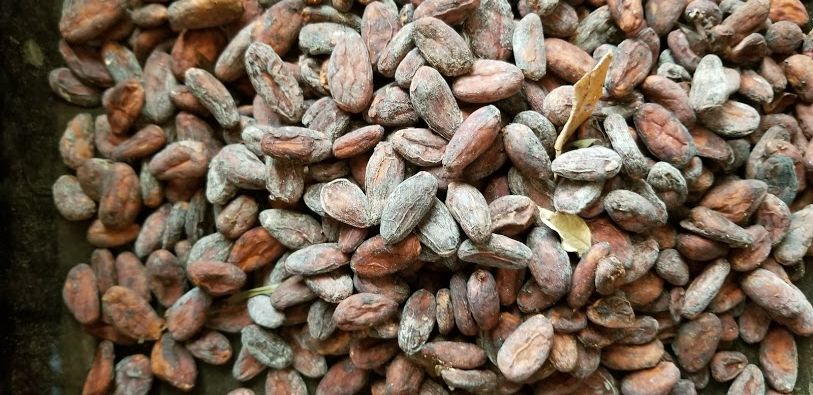
Close your eyes, however, focus, and it’s prunes, raisins, and hold on…it’s Sauternes! It’s dried fruit followed by hints of fermented grapes, ice wines, and a touch of Gewurztraminer thrown in. To turn all those delicious, sophisticated aromas into those warm, familiar notes of chocolate we all know and love surely must require some sort of magic that will take us another day.
Carmelita adjusts the oven and smiles. The sort of smile a professional baker would give a ten-year-old when they ask if it’s hard to make chocolate chip cookies.
“Not really. Just the magic of the oven.”
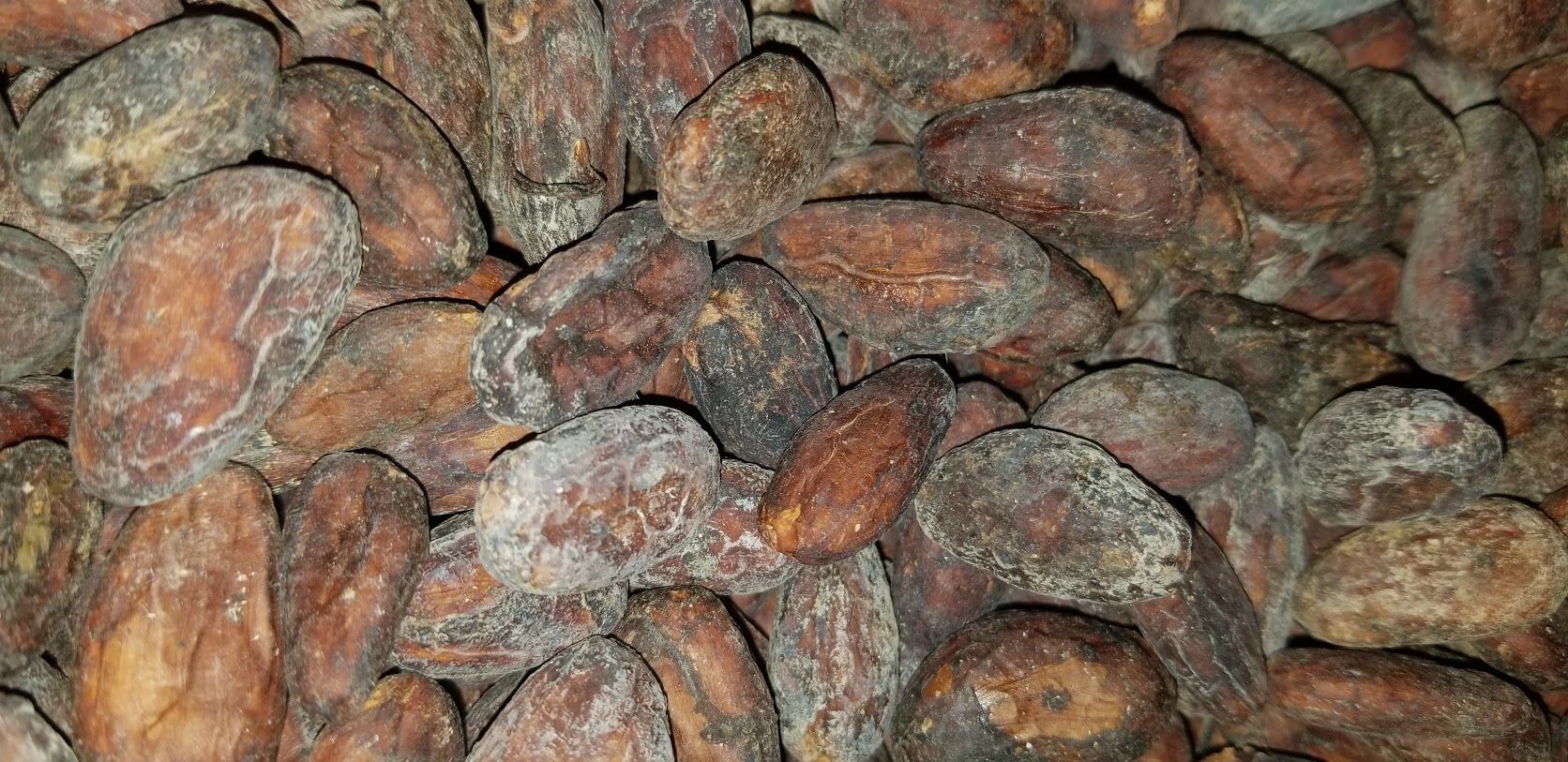
Thirty minutes in a very low oven, 250 Fahrenheit, and that’s it. Fifteen minutes in and I’m already smelling chocolate. The beans are stirred every ten minutes and within thirty minutes, the mystery of the cacao bean has been solved. One can read all the books, watch all the videos, hear all the stories from those that have done it and it won’t come close to the actual experience. Standing over that oven, pulling out that tray of cacao beans, breathing in their heady aromas, I felt as if I’d proudly snapped that last piece of a massive puzzle into its place. Ten minutes to cool to the touch then into the cracker they go.
I’ve placed a bus tub under the cracker, and I’ve got a small scoop to go from the warm bowl to the funnel on top of the cracker. A spinning steel wheel in a narrow passage releases the nibs from the confines of their shells and what was once the tightly wound beginnings of everything needed for a new cacao tree, is now chocolate in its most elemental form. Outside a Black-Headed Trogon is calling, reminding me I’m on the edge of the rainforest.
Once the bus tub is full, the nibs must be separated from their shells. Carmelita places a large tarp on the floor, and I take a seat. Next comes a steel bowl, and a hair dryer. “A winnower could cost us many thousands of American dollars, and there’s the challenge of getting parts here in Toledo, but we can find a hair dryer in Punta Gorda.”
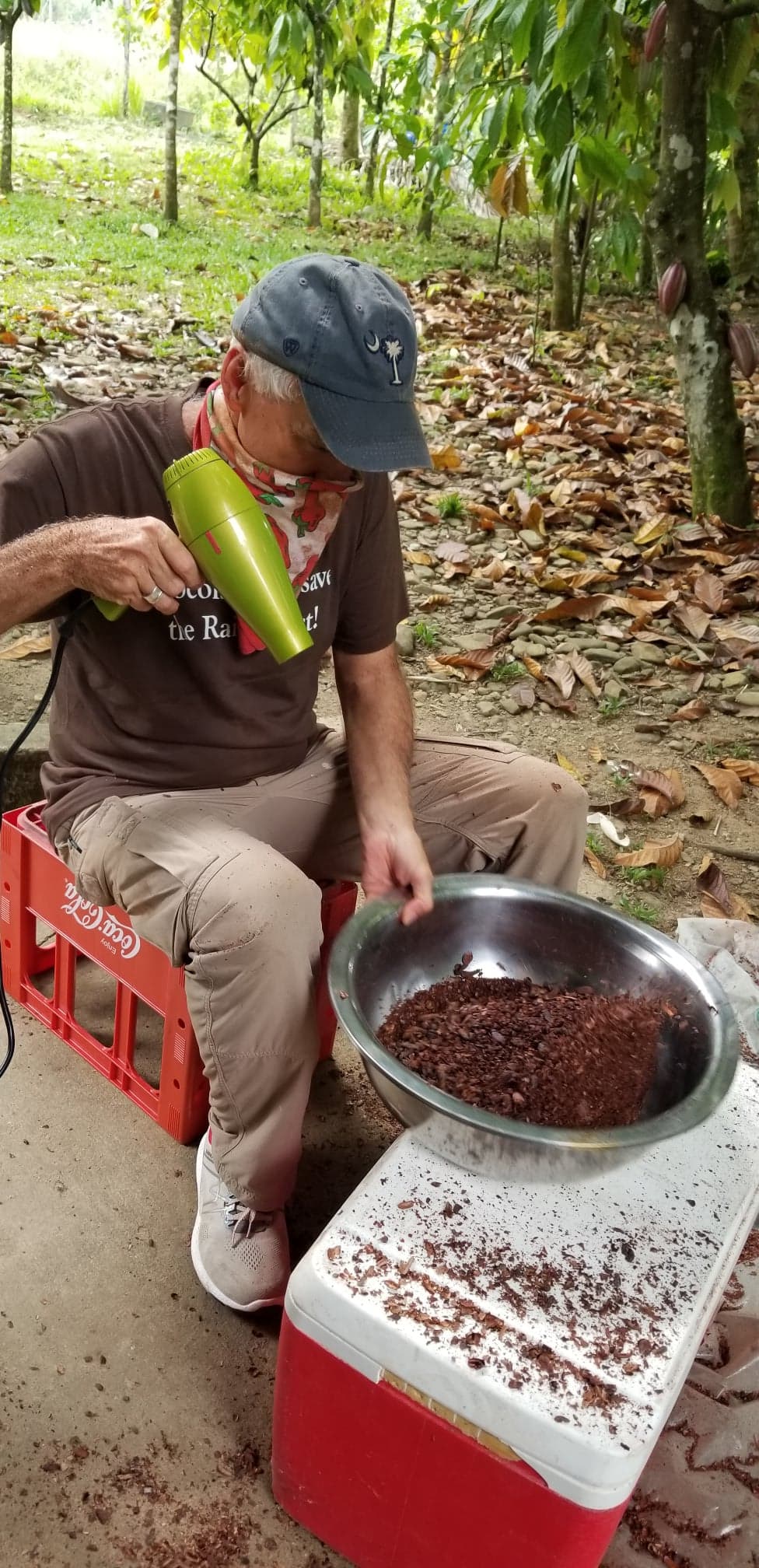
With the blow dryer in one hand, the bowl in the other, I toss the nibs into the air and direct the stream over the airborne nibs while the tarp catches the shells. The shells will become compost, the nibs settle back into the bowl. The entire process takes me ten minutes per bowl, to do the entire tub takes the better part of 90 minutes. Next, we pour the nibs, handfuls at a time, onto a sheet pan and moving left to right, bottom to top, we seek out more shell. At some point the blow dryer can do more harm than good and send nibs flying across the room so it turns to hands and eyes to retrieve the shells. Good Lord they’re the size of half a fingernail and thinner than a sheet of parchment. Good thing I brought reading glasses.
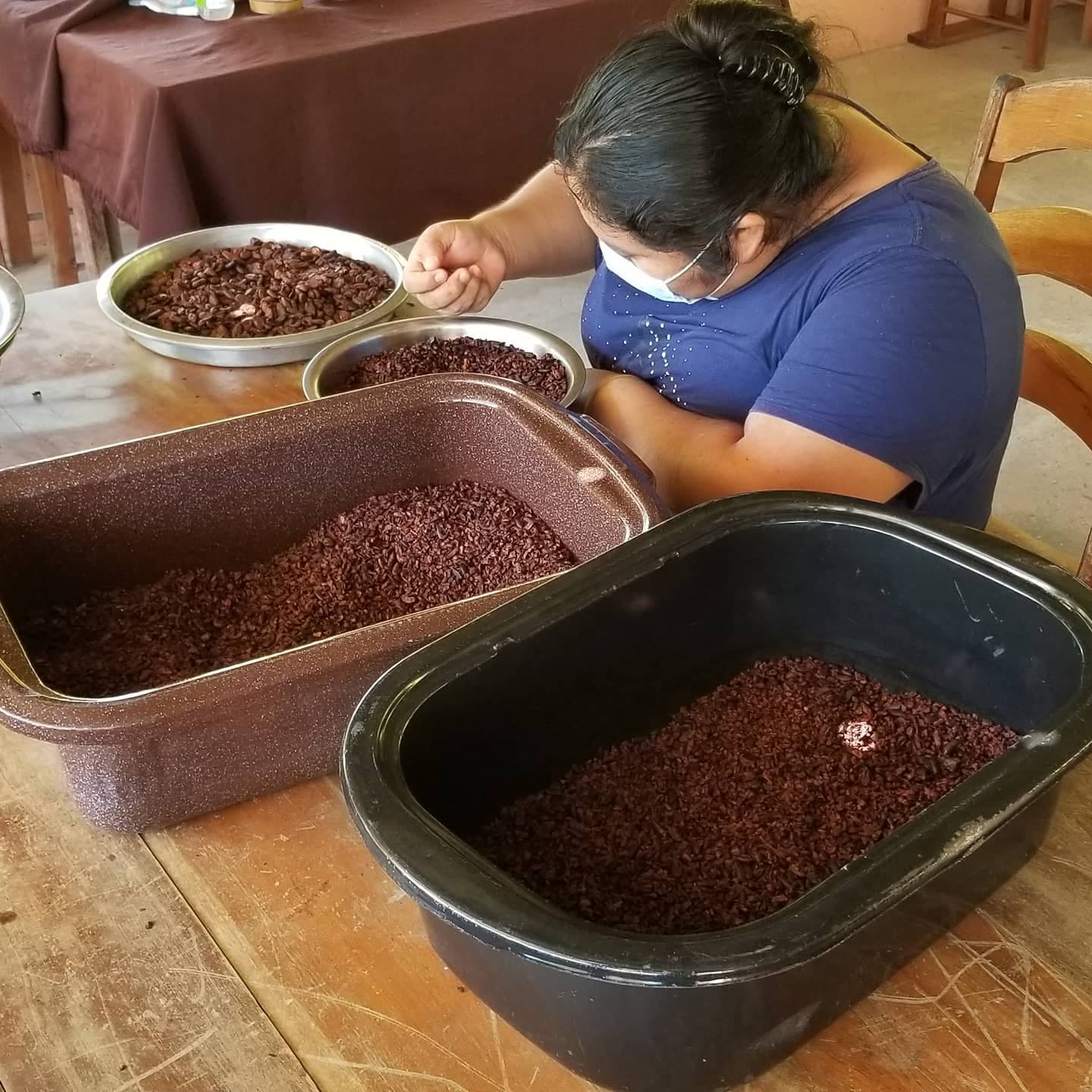
Carmelita is Juan’s sister-in-law, fifteen years younger than his wife Abelina. She is the chocolate maker, managing every step of the process. And when making chocolate bars, Ixcacao aims for 100% pure nibs, no shells. Once I’m done with a group of nibs, Carmelita looks over it for something I missed and I do the same with her batch of nibs. It is tedious work.
Pre-covid, Carmelita employed additional hands to help with this process but today it is just us. By the time Abilena lets us know lunch is ready, we’ve cleaned 75% of the still-warm cacao beans and another ninety minutes after lunch and we’ll be done. At that point the nibs go into the grinder. Imagine a large rectangular, slightly pitched forward hopper with a large drill bit in the narrow channel at the bottom and that’s a nib grinder. The nibs go in at the top then drop into the path of the slowly turning bit and a very dark, slightly chunky paste emerges at the hopper’s exit. Good thing it has such delicious aromas because it is quite unattractive. That paste, or mass as it’s oddly called, now gets placed into the refiner. The refiner’s drum is warm, the wheels are turning, and perhaps in 48 hours, maybe a bit longer, we’ll have 100% chocolate. It won’t be ready for the molds, but it will be very close.
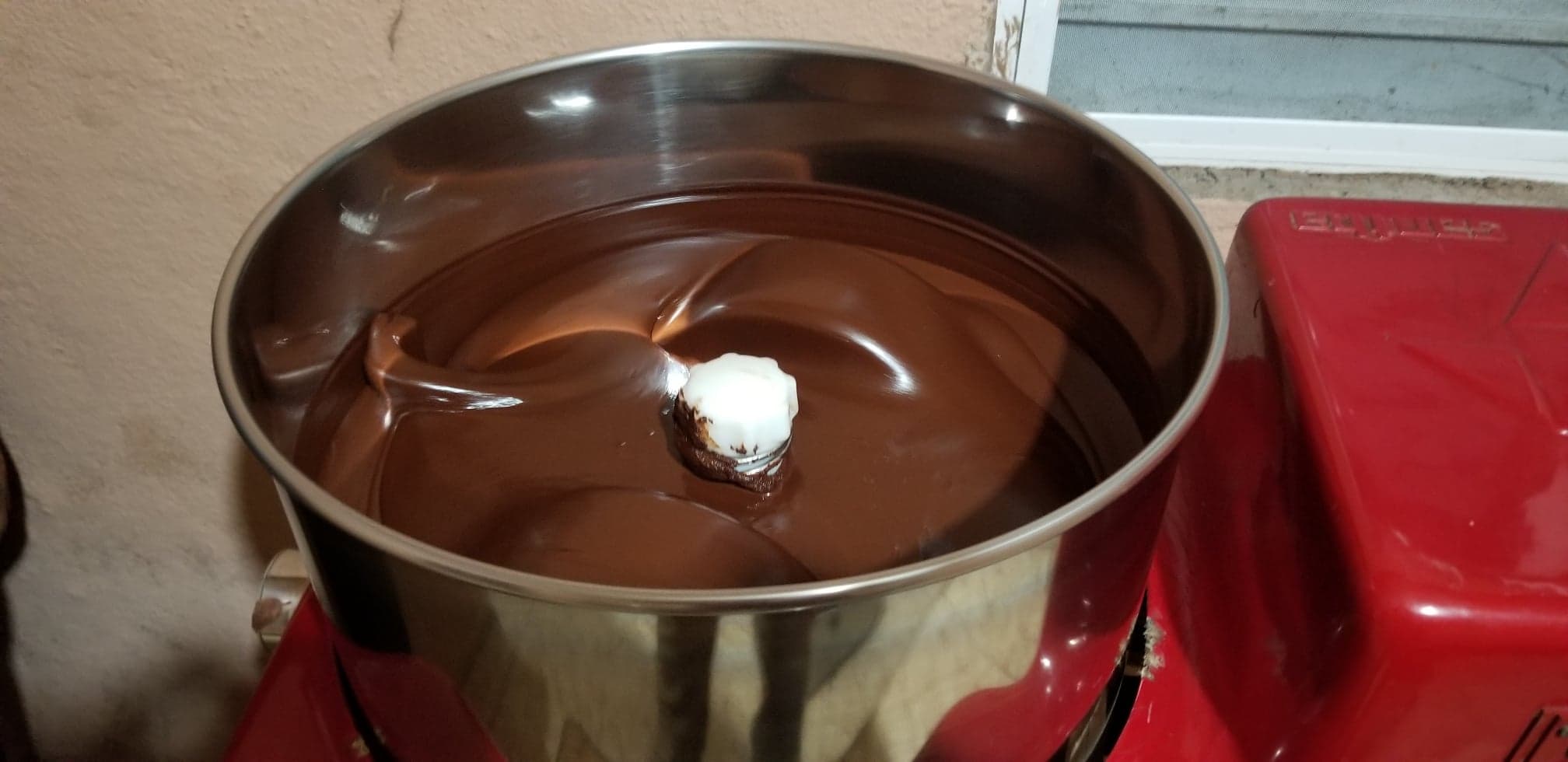
All photos ©2021 John Malik.